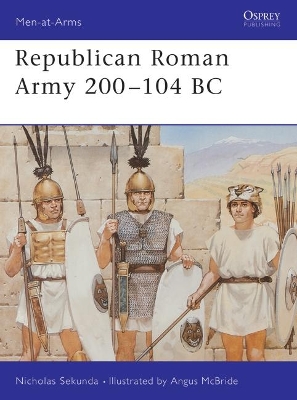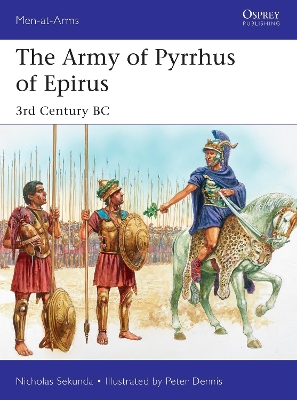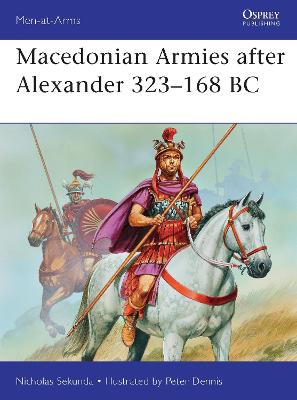Men-at-Arms
2 primary works • 3 total works
Book 291
The principal source of information on the Roman Republican Army is the sixth book of the Histories of the Greek historian Polybius, written a little before 150BC. This engaging text by Nicholas Sekunda draws heavily on this vital source to outline the equipment and organisation of the Roman Republican Army from 200–104 BC – a time when Rome was growing from a regional to a world power. With plenty of photographs and illustrations, including eight vivid full page colour plates by Angus McBride, this fascinating volume examines such topics as the Roman shield, helmets, the cuirass, greaves, the pilum, legion organisation, the principales and the tactics they employed. Men-at-Arms 283, 291 and 46 are also available in a single volume special edition as 'Caesar's Legions'.
Book 528
Pyrrhus was one of the most tireless and famous warriors of the Hellenistic Age that followed the dispersal of Alexander the Great's brief empire. After inheriting the throne as a boy, and a period of exile, he began a career of alliances and expansion, in particular against the region's rising power: Rome. Gathering both Greek and Italian allies into a very large army (which included war-elephants), he crossed to Italy in 280 BC, but lost most of his force in a series of costly victories at Heraclea and Asculum, as well as a storm at sea. After a campaign in Sicily against the Carthaginians, he was defeated by the Romans at Beneventum and was forced to withdraw. Undeterred, he fought wars in Macedonia and Greece, the last of which cost him his life. Fully illustrated with detailed colour plates, this is the story of one of the most renowned warrior-kings of the post-Alexandrian age, whose costly encounters with Republican Rome have become a byword for victory won at unsustainable cost.
The death of Alexander the Great in 323 BC threw the Macedonians into confusion; there was no capable heir, and no clear successor among the senior figures in Alexander's circle. Initial attempts to preserve the unity of Alexander's conquests gave way to a period of bloody and prolonged warfare. For well over a century the largely mercenary armies of Alexander's successors imposed their influence over the whole of the Near East, while absorbing local military practices. After Rome's decisive defeat of Carthage in 202 BC, Macedonia came under increasing pressure from the Romans. Three wars between the two powers culminated in the Roman victory at Pydna in 168 BC, which laid Alexander's empire to rest and established Roman hegemony in the Near East. Drawing upon a wide array of archaeological and written sources and written by a noted authority on the Hellenistic period, this survey of the organization, battle history and appearance of the armies of Alexander's successors is lavishly illustrated with specially commissioned full-colour artwork.


